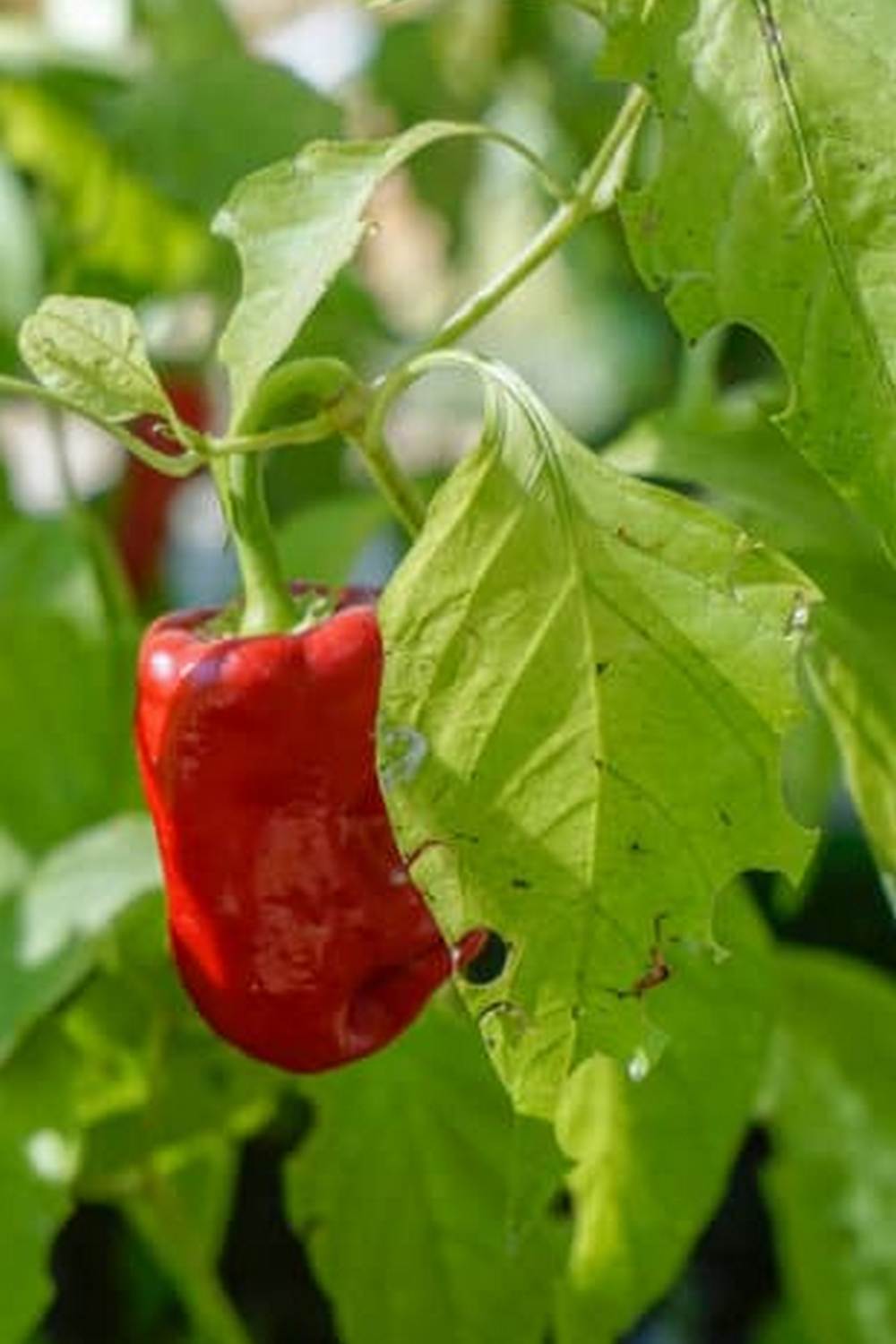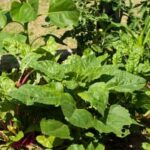Are you interested in starting your own vegetable garden but don’t have much space or experience? Raised bed vegetable gardening for beginners using pallets could be the perfect solution for you. This article will guide you through the basics of creating a successful raised bed garden, from selecting the right location to harvesting your homegrown vegetables.
Raised bed gardening offers numerous benefits, especially for beginners. It provides better drainage, warmer soil for early planting, and easier access for tending to your plants. Using pallets as the building material also makes it an affordable and sustainable option, perfect for those who want to start their garden on a budget.
In this article, we’ll cover everything you need to know to get started with raised bed vegetable gardening. From choosing the right location and preparing your pallets to selecting the best soil and plants, we’ll walk you through each step to ensure that your raised bed garden flourishes. Whether you’re a novice gardener or simply looking for a new project, this guide will help you create a thriving vegetable garden in no time.
Benefits of Raised Bed Gardening With Pallets
Raised bed vegetable gardening for beginners using pallets offers a multitude of benefits, making it the perfect choice for those new to gardening. Here are some reasons why raised bed gardening with pallets is ideal for beginners:
1. Limited Space: Raised beds can be placed in small, compact areas such as balconies, patios, or even concrete driveways. This versatility makes them an excellent option for gardeners with limited outdoor space.
2. Better Soil Quality: By using raised beds, you have complete control over the soil composition, which is especially beneficial if your existing soil is poor quality. You can easily fill the raised bed with nutrient-rich soil, promoting healthier plant growth.
3. Weed and Pest Control: Because raised beds are elevated from the ground, they tend to have fewer issues with weeds and pests. This means less time spent pulling out unwanted plants and dealing with harmful insects, making it a more manageable option for beginner gardeners.
4. Improved Drainage: The elevated design of raised beds allows excess water to drain more effectively, preventing waterlogged soil and root rot. This makes it easier to maintain proper moisture levels in your vegetable garden.
5. Accessibility: Raised beds are typically built at a height that eliminates the need for bending or kneeling while tending to your plants. This accessibility factor can make gardening a more enjoyable experience for beginners who may not be used to physical labor in the garden.
By utilizing pallets for your raised bed vegetable garden as a beginner, you can take advantage of these benefits while also upcycling materials and keeping costs low. With the right location chosen and proper preparation of your pallets, you’ll be well on your way to a successful and rewarding gardening experience in no time.
Choosing the Right Location
When it comes to raised bed vegetable gardening for beginners using pallets, one of the most important steps is choosing the right location for your garden. The success of your vegetable garden depends on the amount of sunlight, water drainage, and accessibility to your raised bed. Therefore, take your time in selecting the best spot before building your garden.
Ideally, you’ll want to place your raised bed in an area that receives at least 6-8 hours of direct sunlight each day. Vegetables need plenty of sunlight to thrive, so finding a sunny spot is crucial for a successful harvest. Additionally, make sure that the location has good water drainage to prevent waterlogging which can lead to root rot in your vegetables.
Accessibility is also an important factor when choosing the location for your raised bed garden. Consider placing it in an area that is easily accessible for watering, weeding, and harvesting. This will make it more convenient for you to take care of your garden and enjoy the fruits of your labor without any hassle.
By carefully considering these factors when choosing the right location for your raised bed vegetable gardening with pallets, you’ll set yourself up for a successful and bountiful harvest. Take the time to find the best spot before building your garden, and you’ll be well on your way to enjoying fresh and delicious homegrown vegetables.
Preparing Your Pallets
When it comes to creating a raised bed vegetable garden for beginners using pallets, the first step is to prepare your pallets. These wooden structures can be easily repurposed into functional and attractive raised beds, making them perfect for those new to gardening. Here is a step-by-step guide to help you build your own raised bed using pallets:
1. Gather Your Materials: The first thing you’ll need to do is gather the necessary materials for building your raised bed. This includes the pallets themselves, as well as additional tools such as a saw, hammer, nails, and landscaping fabric.
2. Disassemble the Pallets: Using a saw or pry bar, carefully disassemble the pallets, removing the individual boards. Take care to avoid splitting or damaging the wood during this process.
3. Construct Your Raised Bed Frame: Once you have the individual boards from the pallets, you can begin constructing the frame of your raised bed. Lay out the boards in a rectangular shape, using nails to secure them together at each corner.
4. Reinforce and Stabilize: To ensure that your raised bed is stable and durable, consider adding additional support to the corners and sides of the frame. This can be done by attaching extra pieces of wood or metal brackets.
5. Install Landscaping Fabric: Before filling your raised bed with soil, it’s important to line the bottom with landscaping fabric. This will help prevent weeds from growing up into your garden while still allowing for proper drainage.
By following these steps, you will be well on your way to building a sturdy and effective raised bed for your vegetable garden using pallets. With just a little effort and creativity, you can create a beautiful and productive gardening space that will yield delicious results all season long.
Soil and Planting
When it comes to raised bed vegetable gardening for beginners using pallets, one of the most important aspects to consider is the soil and planting. The key to a successful raised bed garden lies in providing the right environment for your vegetables to thrive. This includes ensuring that you have the proper soil mix and selecting the right vegetables for your specific growing conditions.
When it comes to filling your raised bed, it’s crucial to use a high-quality soil mix that is well-draining yet moisture retentive. Many gardeners opt for a combination of topsoil, compost, and other organic matter to create an ideal growing medium for their vegetables. It’s also essential to regularly amend the soil with organic matter such as compost or aged manure to keep it fertile and nutrient-rich.
In addition to preparing the soil, selecting the right vegetables for your raised bed is equally important. As a beginner, it’s best to start with easy-to-grow vegetables that are well-suited for raised bed gardening. Some popular choices include lettuce, tomatoes, peppers, carrots, and herbs.
When choosing which vegetables to plant, consider factors such as your climate, available space, and personal preferences. Research each vegetable’s specific requirements for sunlight, water, and spacing to ensure they will thrive in your raised bed garden.
| Tips | Recommendations |
|---|---|
| Use a mixture of topsoil, compost, and organic matter | Ensure proper drainage while retaining moisture |
| Regularly amend the soil with compost or aged manure | Keep the soil fertile and nutrient-rich |
| Start with easy-to-grow vegetables like lettuce, tomatoes, peppers | Consider factors such as climate and available space |
| Research each vegetable’s requirements for sunlight, water, spacing | Select vegetables that will thrive in your raised bed garden |
By following these tips and recommendations for filling your raised bed with quality soil mix and selecting the right vegetables, you’ll be well on your way to a successful and bountiful harvest in your pallet-raised vegetable garden.
Maintenance and Care
Maintaining and caring for your raised bed vegetable garden is essential to keep it healthy and thriving. With the right attention and effort, you can ensure that your plants continue to grow strong and produce an abundant harvest. In this section, we will explore some important tips and techniques for maintaining your raised bed garden with pallets.
Watering Your Garden
One of the most crucial aspects of maintenance for a raised bed vegetable garden is ensuring that your plants receive adequate water. Pallets can dry out quickly, so it’s essential to check the moisture level regularly.
To maintain proper hydration, consider installing a drip irrigation system or using a watering can with a fine nozzle to deliver water directly to the base of the plants. Additionally, mulching around the plants can help retain moisture and reduce the need for frequent watering.
Weeding and Pest Control
Regular weeding is also necessary to keep your raised bed garden in top condition. Remove any unwanted weeds that compete with your vegetables for nutrients and water. Additionally, monitor your plants for signs of pests or disease, and take appropriate measures to address any issues promptly. Consider using natural pest control methods such as companion planting or introducing beneficial insects to deter harmful pests from damaging your crops.
Fertilizing Your Soil
To ensure that your vegetables have access to essential nutrients, it’s important to fertilize the soil in your raised bed garden regularly. Consider using organic fertilizers or compost to enrich the soil and promote healthy plant growth. By providing the right balance of nutrients, you can help your plants reach their full potential and produce a bountiful harvest.
By following these maintenance tips, you can ensure that your raised bed vegetable gardening with pallets continues to thrive throughout the growing season. With proper care and attention, you’ll be able to enjoy a successful and rewarding gardening experience while harvesting delicious homegrown vegetables.
Common Mistakes to Avoid
When starting with raised bed vegetable gardening for beginners using pallets, it’s important to be aware of common mistakes that many novice gardeners make. One common mistake is not properly preparing the pallets before building the raised beds. Pallets can contain chemicals and toxins from their previous use, so it’s crucial to thoroughly clean and seal them before filling them with soil.
Another mistake is not properly positioning the raised bed in a location that receives adequate sunlight and drainage. Many beginners also struggle with overplanting their raised beds, leading to overcrowding and stunted growth of the vegetables.
To overcome these beginner pitfalls, it’s essential to take the time to properly prepare the pallets for use in a vegetable garden. This can include sanding down any rough edges, applying a non-toxic sealant or paint, and ensuring that there are no harmful chemicals present on the pallets.
Additionally, choosing the right location for the raised bed is key to successful gardening. It’s important to select a spot that receives at least 6-8 hours of sunlight per day and has good drainage to prevent waterlogging.
Furthermore, avoiding overplanting in your raised bed is crucial for the healthy growth of your vegetables. It’s essential to follow spacing guidelines for each type of vegetable and resist the temptation to overcrowd your garden. By being mindful of these common mistakes and taking proactive steps to overcome them, beginners can set themselves up for a successful experience with raised bed vegetable gardening using pallets.
| Common Mistakes | How to Overcome Them |
|---|---|
| Improperly prepared pallets | Thoroughly clean and seal pallets before use |
| Poor location selection | Choose a sunny spot with good drainage for your raised bed |
| Overplanting | Follow spacing guidelines and resist overcrowding your garden |
Harvesting and Enjoying the Fruits of Your Labor
After all the hard work of planning, building, and tending to your raised bed vegetable garden using pallets, it’s finally time to enjoy the fruits of your labor. Harvesting the vegetables from your garden is one of the most satisfying aspects of gardening and can be a rewarding experience for beginners. Not only will you get to enjoy fresh, organic produce, but you’ll also gain a sense of accomplishment and pride in growing your own food.
When it comes to harvesting your vegetables, timing is key. Different vegetables have different optimal harvest times, so it’s essential to pay attention to each plant’s growth and maturity.
For example, tomatoes should be harvested when they are fully colored but still firm to the touch, while lettuce can be harvested as soon as the leaves are large enough to eat. It’s important to research each vegetable you’re growing so that you know when it’s ready for harvest.
To maximize the bounty of your vegetable garden, consider preserving some of your harvest for later use. You can do this by freezing, pickling, or canning excess produce. This not only reduces waste but also allows you to enjoy homegrown vegetables throughout the year. Additionally, sharing your surplus with friends and neighbors is a great way to spread the joy of gardening and build community connections through your love for fresh produce.
Conclusion
In conclusion, raised bed vegetable gardening for beginners using pallets is a fantastic way to start your own garden and enjoy the benefits of growing your own produce. By following the step-by-step guide provided in this article, you can create a thriving garden that will provide you with fresh, healthy vegetables throughout the growing season. The use of pallets not only makes this method affordable but also environmentally friendly by repurposing materials.
Once you have chosen the right location, prepared your pallets, filled them with soil, and selected the vegetables that are best suited for your garden, it’s important to remember that maintenance and care are crucial for its success. Regular watering, weeding, and monitoring for pests or diseases will help keep your garden thriving.
As you embark on your journey to successful raised bed vegetable gardening with pallets, it’s important to keep in mind that mistakes may happen along the way. However, by being aware of common pitfalls and how to overcome them, you can avoid frustration and maximize the bounty of your vegetable garden.
Ultimately, as you begin harvesting and enjoying the fruits of your labor, you’ll find satisfaction in knowing that you’ve grown delicious and nutritious produce right in your own backyard. So roll up your sleeves, gather some pallets, and let your raised bed vegetable gardening adventure begin.
Frequently Asked Questions
Can You Use Pallets for Raised Garden Beds?
Yes, pallets can be used for raised garden beds. They are a cost-effective and sustainable option for creating gardening space, especially for those who want to upcycle and repurpose materials.
What Vegetables Can You Grow in Pallets?
Various vegetables can be grown in pallets, including but not limited to lettuce, tomatoes, peppers, zucchini, herbs, and cucumbers. Pallets offer flexibility in terms of what can be planted due to their customizable nature.
How Long Do Pallet Raised Beds Last?
The lifespan of pallet raised beds largely depends on the type of wood used and the environmental conditions. Treated wood pallets may last longer, potentially around 5-10 years when well-maintained. Untreated pallets will naturally degrade over time but can still last several years if properly cared for.

If you’re looking to get into vegetable gardening, or are just looking for some tips on how to make your current garden better, then you’ve come to the right place! My name is Ethel and I have been gardening for years. In this blog, I’m going to share with you some of my best tips on how to create a successful vegetable garden.





